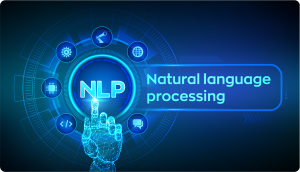
Remember that pic from 10 to 15 years back? Even if it is not your own pic, by looking at it you can know how far back it goes. Nothing says ‘back then’ more than those jeans worn with dresses or the Zac Efron shag-styled hair coming down the forehead. It screams the 2000s. Similarly, software that dates back 10 to 15 years is considered legacy software. It could still be pulling on and it might be on the cloud but it has definitely slowed down with all the code patches made to it. Legacy systems are also not going to be able to keep up with the modern digital economy. Retro in fashion is a trend but legacy software can lose your business the competitive edge. Can your business systems be given a new dose of energy?
Challenges with legacy applications
It is critical for businesses to understand that technology modernization is not just writing applications in more modern code. While every programming language will lose its prevalence, they also use frameworks, external libraries, and architecture that don’t support modern technology integrations.
The challenge with software that is more than 10 years old is
- Legacy systems might not support modern business needs. For instance, legacy EHR systems might not be fully compliant with new HIPAA regulations.
- Outdated hardware and software are easier targets for cyber-attacks making your entire business at risk.
- Maintenance costs for legacy systems can be a problem. These systems become fragile over time and prone to breakdowns. Also, fewer experts are available to fix the issues. Businesses need to decide if the higher maintenance costs can be better invested elsewhere.
- Often the software that companies use is no longer supported by their supplier/vendor and they might not offer support in the event of any problem.
- It can get challenging to add new features to support new business strategies.
This is why companies take on technology modernization projects to update customer-facing products as well as internally developed systems to increase the efficiency of their business processes.
Also read: What is the real cost of maintaining legacy systems?
Why companies are reluctant about modernizing legacy systems
There are 6 main reasons that hold back companies from moving forward.
Businesses are wary of investing in new software solutions because of the fear that the modernized system might not meet their expectations.
Legacy software modernization can take time depending on the complexity of the system or application you want to replace. The fear that embarking on a software project might disrupt business should not be a concern. This is because the old system can continue to run while the software team, whether in-house or external, can work on perfecting the new framework and functionality.
If it ain’t broke why fix it? This is often what businesses believe. Modernizing software is an investment that they feel is not required. Did you know that any software only has a lifespan of 5 years before it starts showing cracks? However, it is not just age that defines a legacy system, its underlying architecture might make it challenging to integrate with new platforms.
Also, legacy systems usually are monolithic which means that they have very large codebases. Since it is developed as a single unit, various functions are interwoven and you cannot make changes to one module without affecting another. A small update can often cause multiple conflicts. Businesses, according to statistics, can be paying 80% more in maintaining old systems and less on innovation, rather than the other way around.
Often well entrenched, enterprise-level systems are hard to modernize mainly because of the human element. We prefer to stick with what is familiar. People are used to working on it and retraining them will be an effort.
The final reason for business hesitancy is often which legacy modernization approach to choose and what benefits to expect. No business wants to go for a full replacement unless they really have reached a dead end.
The normal legacy application modernization approaches in a nutshell are
Refactoring by making micro changes to optimize the existing code. It is generally a code clean-up. It can be considered to be a duct-tape approach because it does not resolve the issues fully. It does work well for the short-run.
Rearchitecting with new application architecture is usually opted for when the current structure doesn’t support new functionality.
Rewriting code from scratch keeping the same functionality but making it more modern and able to integrate with new technologies.
The most extreme is replacing; eliminating the old application entirely and totally transforming it through a new software project. This is the most time-intensive and expensive of all the legacy modernization approaches and is often the least favored.
Which one of these is right for your business is a difficult question for a generalized answer. It will differ for each company based on its organizational requirements and IT infrastructure. This table gives a top-level view of the risks involved, funding, and benefits of different kinds of legacy modernization approaches.

How iTech has helped businesses with their technology modernization
iTech works with businesses for technology modernization in a phased approach. We will first assess your application and make a business case for the modernization of a particular application or system.
After analyzing where your software infrastructure is and where you want to be, we then look into your upgrade options. Low-code development and migration tools help our customers to bring their systems up to date, at a faster pace with lower risk.
For instance, we worked with a healthcare organization that needed to move its EHR system to the cloud but was not ready to invest in a wholly new platform. We developed for them an API integration layer that built them an intuitive layer over their legacy system and helped them to communicate and transfer data with the healthcare network.
If you have been struggling with a legacy application and are not sure how to resolve it, iTech can help. We can take the burden off you for the initial analysis, estimations, and rebuilding. Contact us for a no-obligation conversation about your legacy system.






